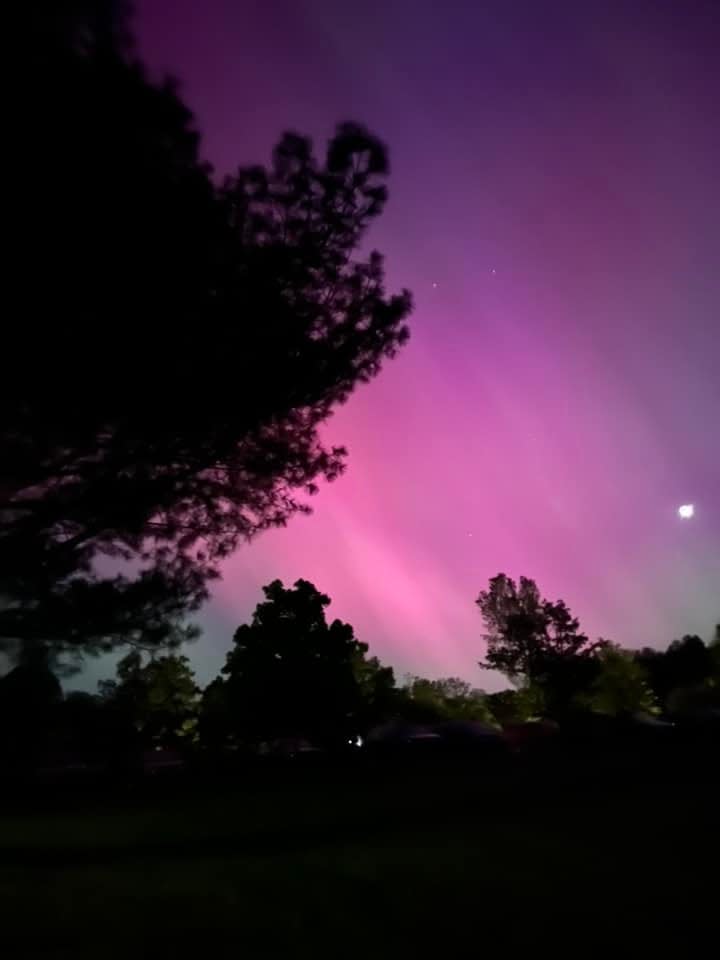The northern lights could shine in Ohio on Sunday. What to know about the aurora borealis
The northern lights should be visible again in Ohio on Sunday night.
A sky full of pink shades with ribbons of green light should be able to be seen Sunday night and into Monday morning after cloud coverage ruined the geomagnetic storm on Saturday night.
The NOAA Space Weather Prediction Center predicts a storm at the G4 to G5 level. The G5 level is the most extreme level possible. The aurora borealis could become visible tonight over much of the northern half of the U.S. and could reach as far south as Alabama.
The NOAA warned that satellite navigation and other technologies could be affected. Here's what to know about the northern lights:
What are the northern lights?

The northern lights are a colorful effect caused by energized particles from the sun that are redirected toward the poles when they collide with Earth's magnetic field, according to NASA.
What is causing the auroras to move into Ohio?
This spectacle is often reserved for latitudes closer to the Earth's northern and southern poles, but a strong solar geomagnetic storm has sent more particles toward Earth than normal this weekend.
This storm erupted from a massive sunspot cluster on the sun. It is classified as "extreme," or a G5, which is the highest level for such a storm, according to the Space Weather Prediction Center.
It is the first G5 storm to hit our planet since 2003.
The National Weather Service said there have been reports of "power grid irregularities and degradation to high-frequency communications and GPS" due to the geomagnetic storms.
When to look for the northern lights
The best aurora is usually within an hour or two of midnight (between 10 p.m. and 2 a.m. local time). These hours expand towards evening and morning as the level of geomagnetic activity increases.
How to view the aurora borealis
During times of high geomagnetic activity, which pushes the northern lights further south, the aurora will be visible directly overhead in the northern United States, according to the prediction center.
For the best viewing, the center recommends that it be very dark. Get away from city lights and avoid trying to see them on the night of a full moon. The best time to view the aurora is within an hour or two of midnight, or 10 p.m. to 2 a.m.
How to photograph the northern lights
If you're looking to photograph the aurora, National Geographic has some advice.
The article recommends using a tripod to keep the camera stable. Shooting at night means keeping the camera shutter open longer. That could create a blurry image if the camera is bumped or you aren't holding it steady. Also, use a wide-angle lens to capture as much of the sky as possible. And, don't just take a photo of the sky. Compose a better photograph by getting the horizon, or a tree or building, into the image with the aurora.
This article originally appeared on Akron Beacon Journal: The northern lights will be visible over Ohio again on Sunday

